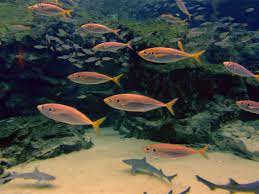Ecosystem: Basic Science for J S 2

Ecosystem: Basic Science for J S 2
MEANING OF ECOSYSTEM
An ecosystem is a community of living organisms (plants, animals, and microorganisms) interacting with each other and their physical environment (such as soil, water, and air). These interactions form a complex web of relationships where organisms depend on each other for survival. Ecosystems can vary greatly in size and complexity, ranging from a small pond to a vast tropical rain forest.
COMPONENTS OF ECOSYSTEM
The components of an ecosystem can be broadly categorized into two main groups: biotic and abiotic.
- Biotic Components:
- Producers: Organisms capable of photosynthesis or chemosynthesis, such as plants, algae, and certain bacteria, which convert energy from sunlight or chemicals into organic matter.
- Consumers: Organisms that consume other organisms for energy, including herbivores (plant-eaters), carnivores (meat-eaters), and omnivores (consumers of both plants and animals).
- Decomposes: Organisms like fungi and bacteria that break down dead organic matter into simpler substances, releasing nutrients back into the ecosystem.
- Detritivores: Organisms like earthworms and some insects that feed on detritus (dead organic matter), further aiding in its decomposition.
- Abiotic Components:
- Soil: The medium in which plants grow, consisting of minerals, organic matter, water, and air.
- Water: Essential for life, serving as a medium for chemical reactions, transportation of nutrients, and habitat for aquatic organisms.
- Air: Contains gases like oxygen, carbon dioxide, and nitrogen crucial for respiration and photosynthesis.
- Sunlight: Provides energy for photosynthesis, driving the ecosystem’s productivity.
- Climate: Includes factors such as temperature, precipitation, humidity, and wind patterns, influencing the distribution and abundance of organisms.
- Geology: Physical features of the environment such as terrain, topography, and substrate composition, affecting the availability of resources and habitat diversity.
These biotic and abiotic components interact with each other in complex ways, forming interconnected networks of energy and nutrient flow within an ecosystem. Each component plays a vital role in maintaining the balance and functioning of the ecosystem.






